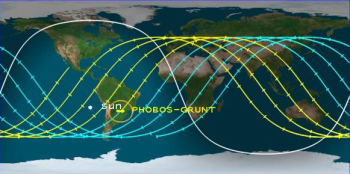Looking for scapegoats: Russia is now investigating whether a U.S. military radar signal might have disabled Phobos-Grunt.
The state news agency RIA Novosti quoted Yury Koptev, former head of the Russian space agency Roscosmos, as saying investigators will conduct tests to check if a U.S. radar emissions could have impacted the Phobos-Ground space probe, which became stuck in Earth’s obit for two months before crashing down. “The results of the experiment will allow us to prove or dismiss the possibility of the radar’s impact,” said Koptev, who is heading the government commission charged with investigating causes of the probe’s failure.
The current Roscosmos head, Vladimir Popovkin, previously said the craft’s malfunction could have been caused by foreign interference. Deputy Prime Minister Dmitry Rogozin acknowledged U.S. radar interference as a possible cause but said it was too early to make any conclusions. “This version has the right to exist,” Rogozin said Tuesday. “There is evidence indicating that frequent disruptions in the operation of our space technologies occur in that part of the flight path that is not visible to Roscosmos and is beyond its control.”
Though this might be technically possible, it is incredibly unlikely. For Russian politicians to focus on this issue indicates serious problems in both their space engineering community and their political culture.


